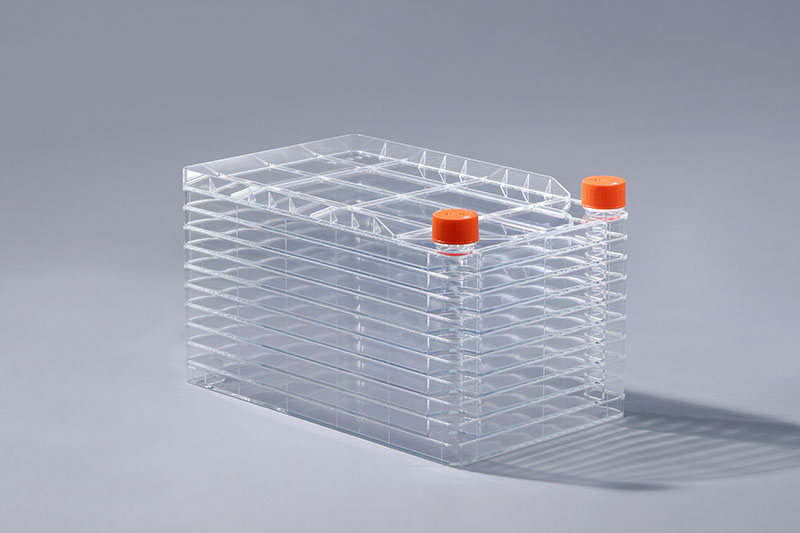Cell factories are commonly used consumables in large-scale cell culture. Cells have high requirements on the growth environment and require specific temperature, osmotic pressure, gas phase and pH value. Therefore, the cell factory as a cell growth carrier must meet the conditions for cell growth. , generally produced under the C-class standard of the clean workshop.
A clean workshop is also called a clean room or a clean room, which refers to the removal of particulates, harmful air, bacteria and other pollutants in the air within a certain space, and the indoor temperature, cleanliness, indoor pressure, and airflow speed. It is a specially designed room with airflow distribution, noise vibration and lighting, and static control within a certain range of requirements. That is to say, no matter how the external air conditions change, the interior can maintain the characteristics of cleanliness, temperature, humidity and pressure that were originally set. The C-level clean room standards of the cell factory are as follows:
1. The air temperature in the clean operation area should be 20-24℃
2. The relative humidity of the air in the clean operation area should be 45%-60%
3. The number of air changes in the room: ≥25 times/h
4. Differential pressure: The C-level area is ≥10Pa relative to the outdoor, and different areas of the same level should maintain a certain pressure difference according to the airflow direction
5. The leak detection of the high-efficiency filter is greater than 99.97%
6. Illumination: >300lx-600lx
7. Noise: ≤75db (dynamic test)
In addition to strict requirements for the production environment, the cell factory also undergoes electron beam sterilization after production to ensure the sterility of the product and meet the needs of cell growth conditions.
The FAI climbed 5.9 percent year-on-year in the first 11 months of 2018, quickening from the 5.7-percent growth in Jan-Oct, the National Bureau of Statistics (NBS) said Friday in an online statement.
The key indicator of investment, dubbed a major growth driver, hit the bottom in August and has since started to rebound steadily.
In the face of emerging economic challenges home and abroad, China has stepped up efforts to stabilize investment, in particular rolling out measures to motivate private investors and channel funds into infrastructure.
Friday's data showed private investment, accounting for more than 60 percent of the total FAI, expanded by a brisk 8.7 percent.
NBS spokesperson Mao Shengyong said funds into weak economic links registered rapid increases as investment in environmental protection and agriculture jumped 42 percent and 12.5 percent respectively, much faster than the average.
In breakdown, investment in high-tech and equipment manufacturing remained vigorous with 16.1-percent and 11.6-percent increases respectively in the first 11 months. Infrastructure investment gained 3.7 percent, staying flat. Investment in property development rose 9.7 percent, also unchanged.
 English
English



















































